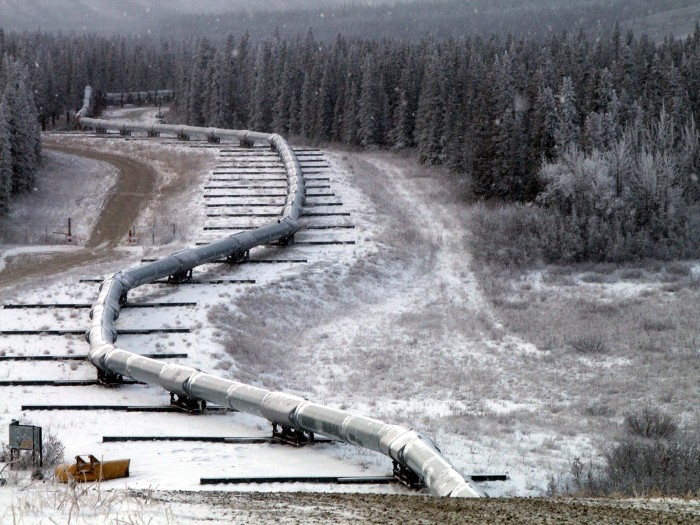In the northeast corner of Alaska lies the Arctic National Wildlife Refuge (ANWR). Or, as our Washington politicians refer to it, Ahhnwarr.
It is a 19-million acre playground for bears, wolves, moose, marten and, most famously, the Porcupine Caribou Herd.
It’s also home to a little natural resource known as oil, the majority of which is located in the “1002” area of the reserve.

In 1998, the United States Geological Survey (USGS), estimated there was between 4.3 and 11.8 billion barrels of oil beneath the tundra of the 1002 region valuing approximately 7.7 billion dollars.
On the surface, it sounds like an incredible amount, especially compared to the nearby National Petroleum Reserve – Alaska (NPRA), which holds an estimated 896 million. On the global scale however, it’s just a drop in the barrel.
By the time drilling could be hypothetically running at peak productivity, the oil extracted would represent somewhere between 0.4 and 1.2 percent of the world’s total—a figure that would have virtually no impact on global oil prices.
To put those numbers into context, the average price for a gallon of gas in the U.S per AAA’s daily fuel report is $2.03. If the refuge was magically up and running at its highest efficiency tomorrow, the best case scenario would see that average drop to an even $2.00/gallon.
My Nissan Pathfinder holds about 14 gallons, which means it would save me 42 cents every time I filled up. Refueling once a week would mean that over the course of a year, opening the refuge to development would save me roughly $22.
In other words: the U.S. would be just as reliant on foreign oil if the refuge was tapped.
America now has an opportunity to cleanse itself of its oil addiction. In an incredible 98-1 vote, the U.S. Senate recently declared that “climate change is real and not a hoax”; the scientific community is finally being heard at a national level. Surely the next step is to begin reducing the anthropogenic effects of climate change.
What better way to start than eschewing our own oil reserves in favor of alternative forms of energy? It would send a powerful message to the American people that we’re moving forward: that the golden age of oil is coming to an end, and the time has come to find ecologically-friendly alternatives.
My favorite is solar roadways, which are the coolest thing since James Bond. The technology, while still in the prototype phase, received a $750,000 grant from the Federal Highway Administration back in 2011, indicating that the government has at least some interest in the idea. Solar Roadways has also found plenty of citizen support, raising over 2.2 million dollars through the website indiegogo.com, receiving a huge boost after Mr. Sulu himself promoted it on Facebook and Twitter.
President Obama closed large portions off the west coast of Alaska to oil and gas leasing, a motion that spoke to the President’s wish to protect the renewable resources of the area such as the Bristol Bay watershed. Just days ago, the President asked for increased protection of the Arctic National Wildlife Refuge.
Naturally, having a Republican majority in both the House and Senate convolutes the President’s message. But Republican stood alongside Democrat in declaring that the climate is changing. It would be the height of hypocrisy to declare that the world is warming and still continue to push for developments that would exacerbate the problem.
Yet, earlier this month, Republican Don Young (Alaska) proposed a bill that would strip the President of the power to set aside national monuments—a power that 16 presidents have used to protect landmarks and wilderness areas in the past 100 years.
70% of Americans say they would support additional environmental policies such as protecting public lands like wildlife refuges. But somehow we’ve elected a congress that has passed just one major land conservation piece of legislation since 2009.
Somewhere there’s a disconnect: Americans value the protection of wild places, but not enough to elect those who would fight to save them. Do we just like the idea of being environmentalists?
It’s a side of politics that’s easy to forget: Most will never set foot in the refuge; it could vanish tomorrow and we’d likely be personally unaffected. We sit in the polling booth and think about other factors that take a higher priority and saving wild places and open spaces falls by the wayside.
The easiest way to practice what we preach is to simply stop electing those who want to take these places away. It needs to become a priority, something that we critically consider when deciding who will represent us.
The climate is changing; oil is not the longterm energy answer; and the deposits in the refuge would be nothing more than a band-aid on a gaping wound. We are spinning down the rabbit hole and there is no jabberwocking Johnny Depp to greet us at the bottom. The time has come to slowly begin making our way back to the surface.
References:
http://pubs.usgs.gov/fs/fs-0028-01/fs-0028-01.htm
http://www.eia.gov/oiaf/servicerpt/anwr/results.html
http://www.solarroadways.com/intro.shtml
-www.whitehouse.gov/the-press-office/2014/12/16/president-obama-protects-alaska-s-bristol-bay-future-oil-and-gas-drillin
-http://thinkprogress.org/climate/2015/01/16/3612461/poll-voters-want-renewable-energy/
– http://thinkprogress.org/climate/2014/12/13/3603163/congress-protects-national-parks-and-wilderness/
Author: David Cannamore
Editor: Caroline Beaton
Photo: Wikimedia



Read 0 comments and reply